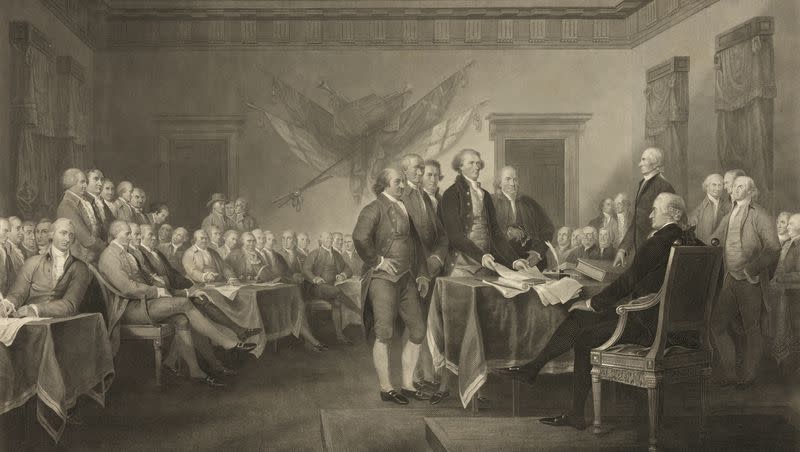Here’s what the first Fourth of July celebration looked like

- Oops!Something went wrong.Please try again later.
- Oops!Something went wrong.Please try again later.
- Oops!Something went wrong.Please try again later.
- Oops!Something went wrong.Please try again later.
- Oops!Something went wrong.Please try again later.
- Oops!Something went wrong.Please try again later.
Past Fourth of July traditions looked different than today’s — long before the dawn of the annual Nathan’s Famous Hot Dog Eating Contest and the extravagant Macy’s fireworks show.
In 1776, founding fathers Thomas Jefferson, Benjamin Franklin, John Adams, Roger Sherman and Robert R. Livingston wrote the Declaration of Independence, officially severing ties with England.
A year later, the United States of America turned one year old, and the very first Fourth of July celebration was held in the city of Philadelphia.
To celebrate the newfound independence of 13 states, ships lined up on the Delaware River and fired 13 cannon shots.
But that wasn’t all. Even though John Adams, second president of the United States and chairman of the marine committee at the time, said in a letter to his daughter Abigail Adams that he was “too old to delight in pretty descriptions,” he described the festivities in some detail to her.
Aboard the Delaware Frigate, an armed ship with a role in the American Revolutionary War, Adams said that “the wharves and shores, were lined with a vast concourse of people, all shouting and huzzaing, in a manner which gave great joy to every friend to this country, and the utmost terror and dismay to every lurking tory.”
Related
He was accompanied by John Hancock, another signer of the Declaration of Independence, and officials from the Marine Committee. Together they ate dinner at 3 while a band of captured Hessians played music for them.
“The toasts were in honour of our country, and the heroes who have fallen in their pious efforts to defend her,” he wrote.
“In the evening, I was walking about the streets for a little fresh air and exercise, and was surprised to find the whole city lighting up their candles at the windows,” he said, calling it “the most splendid illumination” he ever saw.
Although the idea of celebrating the day was not conceived until the second of that July in 1777, and not said out loud until the third, Adams said he was amazed at the universal celebration he observed.
While the Fourth of July was glorious, Adams disagreed with other founding fathers on when American independence should be celebrated.
According to the National Constitution Center, Adams believed the right date was July 2, since that was when the Continental Congress declared freedom from Great Britain. But the document declaring this independence took two days to draft.
The two early presidents, who were friends — and sometimes foes — Adams and Jefferson, argued over the date. Coincidentally, they both died on the Fourth of July, 1826.

